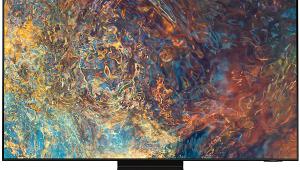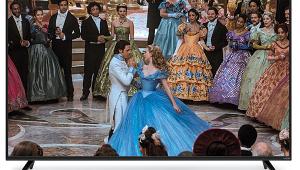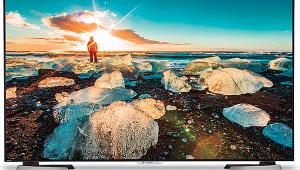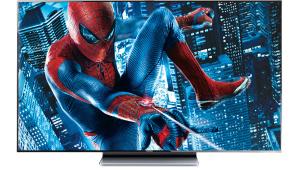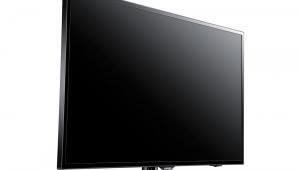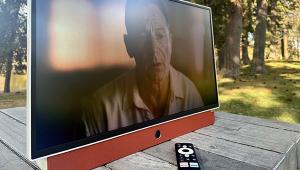Sony BRAVIA XBR-52LX900 3D LCD HDTV
LCD With a Side of LEDs

When I looked over Sony’s press release at the January 2010 CES, I was a bit confused. There are 10 different 3D sets in Sony’s current lineup. The XBR-LX900 line under review here includes 60- and 52-inch models with LED edge lighting, an integrated 3D sensor, and ships with two pairs of 3D glasses in the box. Other 3D HDTVs in Sony’s other lines include either full-array LED lighting with local dimming or Dynamic Edge LED edge lighting. Sony includes the 3D sensor and glasses with some sets, while they’re extra-cost options with others. Sony offers 3D HDTVs in screen sizes ranging from 40 to 60 inches, but not every 3D line offers all of them.
Our subject for today is the XBR-52LX900—all 52 inches, fixed LED edge lighting, 3D glasses, and BRAVIA XBR of it.
Featured Attractions
At just over 2.5 inches, the XBR52LX900 is a bit thicker around the waist than some of the ultraflat panels we’ve seen lately. That should provide more room for backlight diffusion and therefore more uniform screen illumination. Nevertheless, the set’s reproduction of black, as well as lighter gray and full-color fields, wasn’t flawless. Some areas were lighter than others, including the sides, but that flaw is visible mainly on very dark scenes, and it’s common to all of the LED edge-lit sets we’ve seen so far.
The Sony’s thicker cabinet also provides more interior space for decent sound, and the LX900 does have better sound than many of the flat panels we’ve tested.
 The side and rear jack panels include ample HDMI, component, and composite video inputs, a USB jack for playing back photos, music, and videos from USB-compatible storage devices, and a LAN terminal for a home network connection. A removable panel conceals the rear jack panel, and the sideways mounting of the two HDMI ports there made for a tight fit. There are two other HDMI connections on the unobstructed side panel.
The side and rear jack panels include ample HDMI, component, and composite video inputs, a USB jack for playing back photos, music, and videos from USB-compatible storage devices, and a LAN terminal for a home network connection. A removable panel conceals the rear jack panel, and the sideways mounting of the two HDMI ports there made for a tight fit. There are two other HDMI connections on the unobstructed side panel.
The Sony has 12, count ’em, 12 Picture Modes. As with the XBR52HX909 [HT, November 2010], these are divided up among eight different so-called Scene Select choices such as Sports, Photo, Cinema, Auto, and General. This arrangement is convoluted at best, particularly since many of the Scene Select choices don’t offer the Custom mode I prefer. The General option does, so that’s the one I used.
You can adjust most of the video settings individually for each input. I usually find little use for most picture adjustments beyond the basics. The Advanced Contrast Enhancer, located in the Advanced Settings submenu, did lower the black level slightly, but even in low, it made the picture a little garish and unnatural. The Black Corrector, which I had found useful with the XBR-52HX909, was less so here, so I left it off. Gamma controls the mid-brightness region, and my preferred gamma settings ranged from –1 to +2, depending on the source. The best way to use gamma adjustment (after you set the other basic settings correctly) is to start at zero. If the image looks a little washed out, drop the setting to –1; if it’s a bit too dark, increase it to +1 or even +2. Only in rare cases should there be any need to go beyond those settings.
I ignored Auto Light Limiter, Clear White, and Live Color. The Eco menu also has a Light Sensor control that adjusts automatically to suit the room lighting. I left it off. But be careful; it hides in the Eco menu and is on by default.
An Intelligent Presence Sensor is another Eco feature. Depending on the option you select, it can monitor body movements and facial patterns and turn off the picture if it doesn’t detect any viewers; ensure that child viewers are at least 1 meter from the screen (if not, it also turns off the picture and issues a warning message and sound); and adjust the left and right audio balance to suit your viewing position. Scary.
White Balance controls offer both high (Gain) and low (Bias) calibration adjustments for red, green, and blue. The set has no color management system for adjusting the color points, but our measurements show that it doesn’t need one.
- Log in or register to post comments
